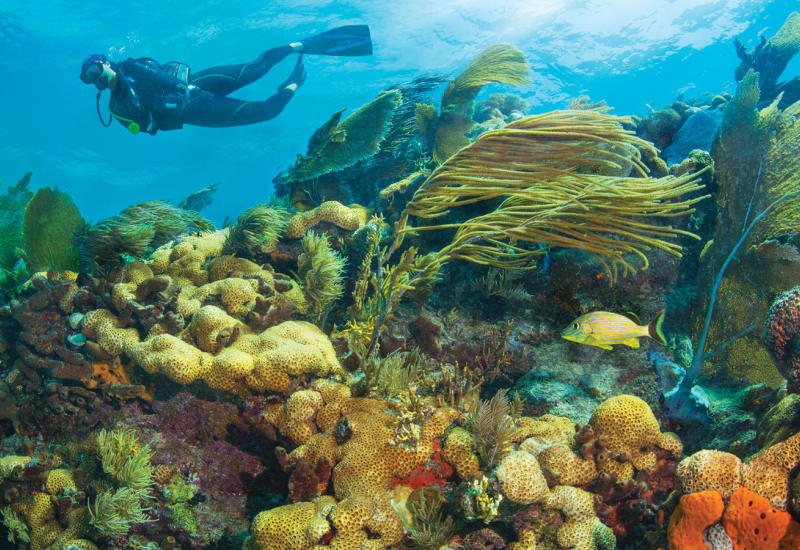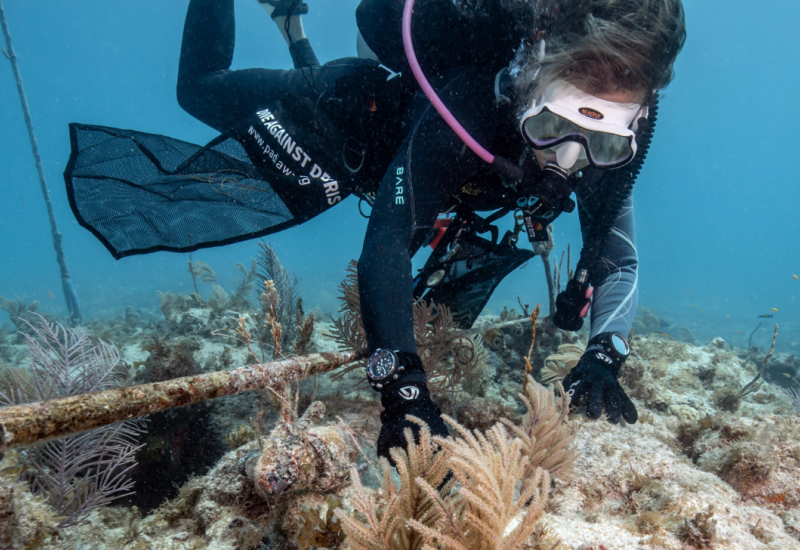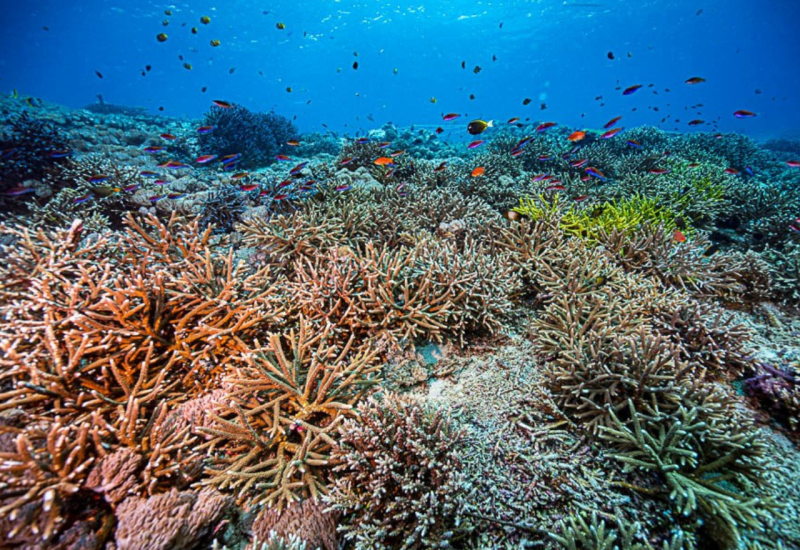Ken Stewart Honored as a Scuba Diving Sea Hero
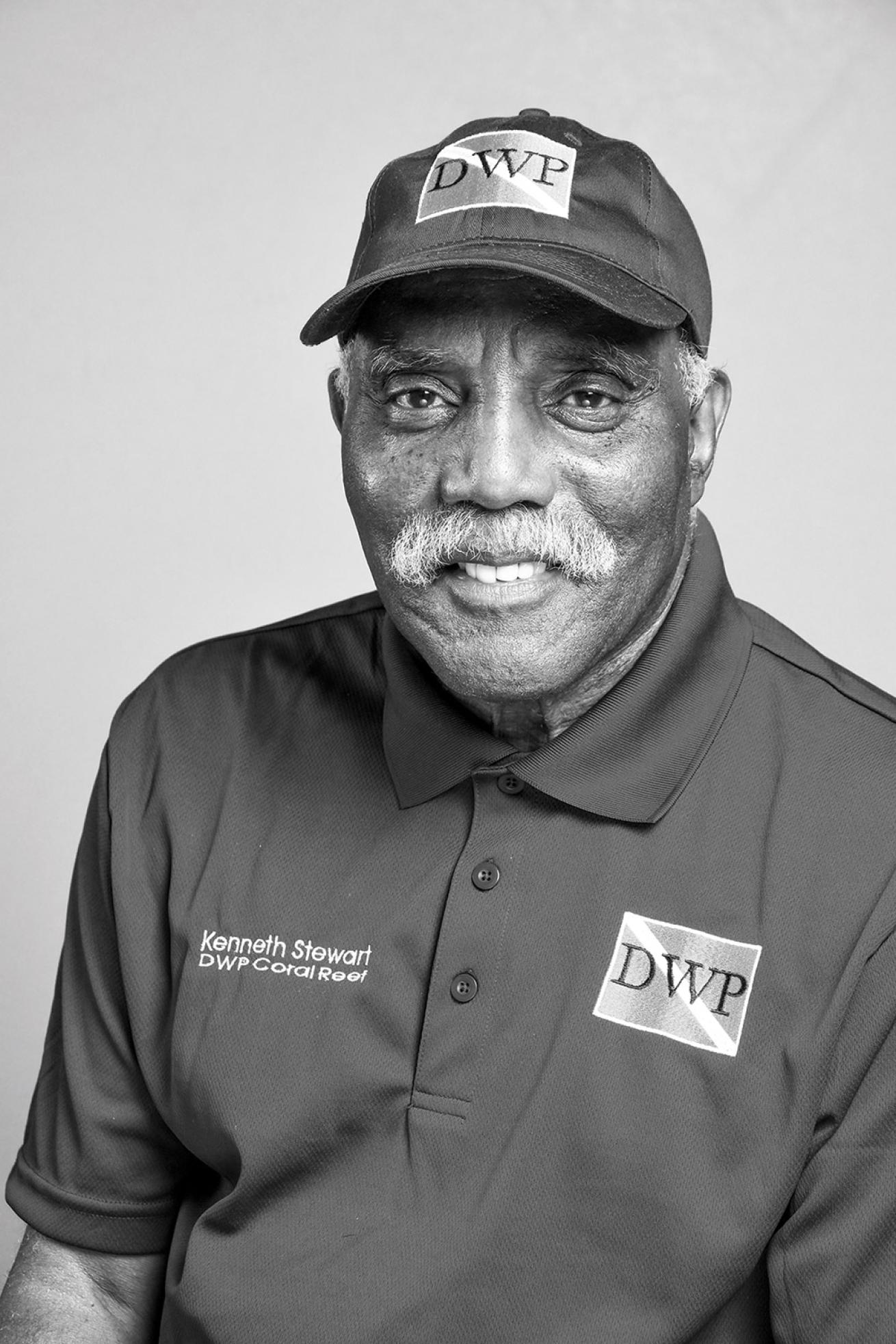
Ken StewartKen Stewart, founder of Diving with a Purpose.
YEAR DIVE CERTIFIED: 1990
AGE WHEN CERTIFIED: 46
DIVE CERTIFICATION LEVEL: AOW
WORDS TO LIVE BY: “Problems cannot be solved with the same mindset that created them.” — Albert Einstein
A veteran diver who was looking for a challenge, Ken Stewart was attracted to the rigor and discipline of combining diving and maritime archaeology. His conversion led him to the founding of Diving With a Purpose, which teaches qualified divers the basics of maritime archaeology, with a special focus on exploring the ocean legacy of the African slave trade. DWP has dedicated countless volunteer hours to projects for NOAA, the National Park Service and the Smithsonian, and has made inclusion of teenage and young adult divers a special focus, fostering understanding of our shared national heritage and what its underwater remains can teach us.
How did Diving with a Purpose come about?
Diving With a Purpose started in 2003 through a partnership between the National Park Service and members of the National Association of Black Scuba Divers. In 2003, Karuna Eberl, producer of a documentary called The Guerrero Project [which documents the search for the slave ship Guerrero, lost in the Biscayne National Park area in 1827], contacted me. At that time, I was the southern regional rep for NABS; she asked if I knew any black divers she could interview for her documentary, and I put her in touch with several NABS members. The star of the film was a young lady named Brenda Lanzendorf, the park archaeologist at Biscayne National Park. A few months later I went down to Biscayne and introduced myself; Brenda and I had a very long and fruitful conversation. The last thing she said to me before I left was, “There are many wrecks in the park, and being the lone diver, I need some help,” because as a scuba diver, you should never dive alone. I went home and thought about it, and I sent out an email to my dive list, “Tired of the Same Old Diving? Let’s Dive With a Purpose.” And DWP was born.
DWP has a special focus on the preservation and study of submerged cultural resources. Why is that important?
Like many veteran divers, we are always looking for more. I have been diving for over 28 years; DWP offers the veteran diver something new. Participation in DWP requires an intense, one-week course that teaches the lay scuba diver the basic tenets of maritime archaeology. The African slave trade has been mostly ignored — it’s not taught in schools and it’s not taught in the home. DWP has an opportunity to bring this era to light.
What has been DWP's greatest challenge?
Brenda Lanzendorf was the catalyst for DWP. DWP at that time was composed of mostly African-American divers, all with an interest in diving and also a love of history. The Guerrero Project tells the story of the slave ship Guerrero, which ran aground somewhere in Biscayne in December 1827 with 561 Africans on board. Forty-one Africans died that night, and the rest were enslaved or sent back to Africa. Brenda always said she knew where the Guerrero lay, and when she thought our training was up to her standards she would take us to the site and we would be the first to document it. As amateur historians and divers, this was the motivation we needed to continue training — we trained for six years hoping that Brenda would say we were ready.
Unfortunately, Brenda passed away in 2009. If she knew where Guerrero lay, she took it to the grave. We had to put everything on the back burner; in fact, 2010 would be the last adult DWP mission in Biscayne National Park. In 2011 we started partnering with NOAA, documenting wrecks in the Florida Keys National Marine Sanctuary. Not being able to fulfill our promise to document the site of the Guerrero has been DWP’s biggest challenge.
Do you think it's important for diving and the dive industry to become more diverse?
When I visit trade shows, I see nothing but older divers. If the industry is to grow and be more diverse, it needs to embrace organizations like NABS. There are many small, grass-roots organization that teach diving to young minority students, who can and will be part of the future of diving.
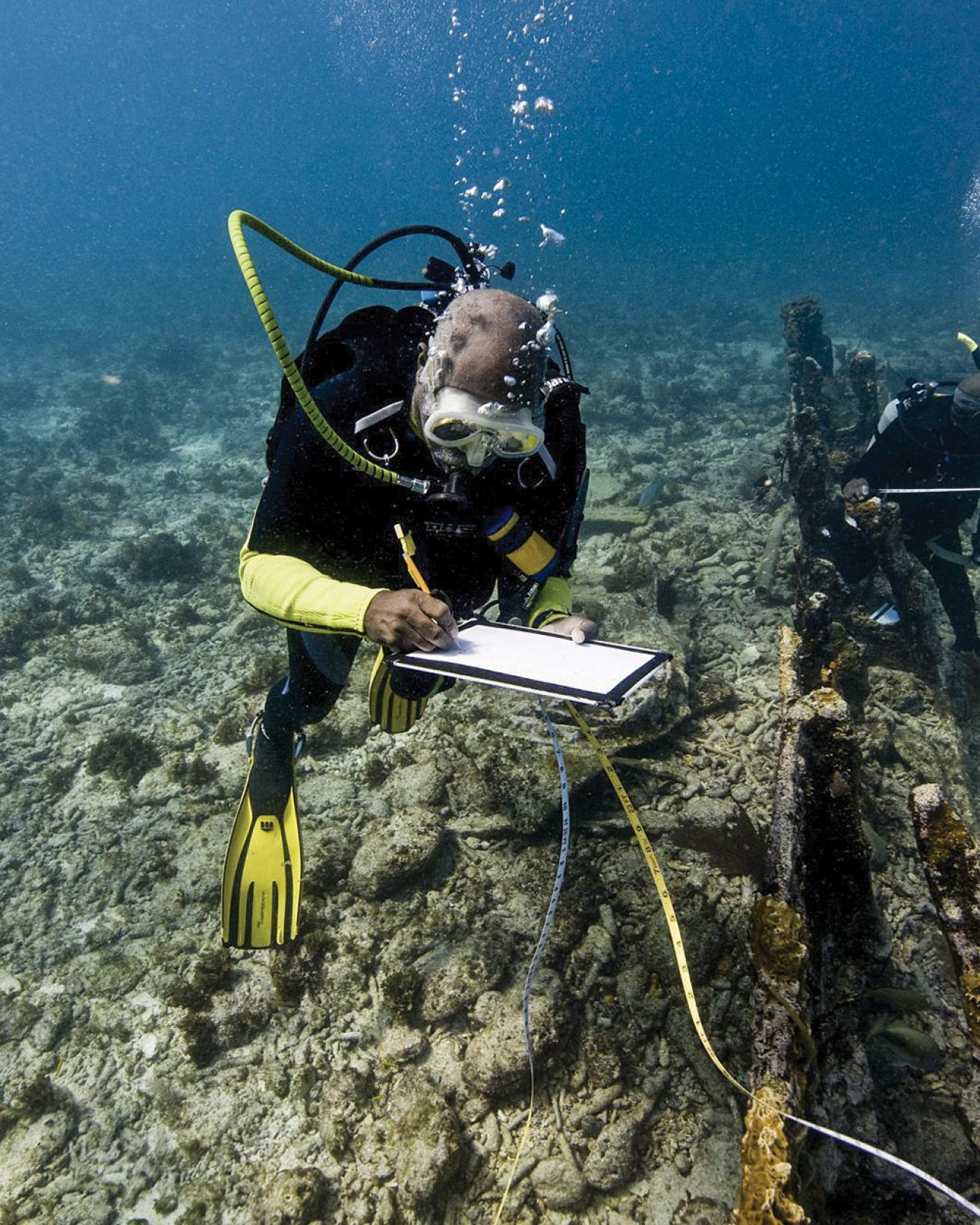
Ken StewartStewart documents the City of Washington in the Florida Keys National Marine Sanctuary, a project that partnered DWP with NOAA.
What's been your most satisfying moment with DWP?
I’m also the co-founder and program director of an organization called the Tennessee Aquatic Project and Development Group. TAP has 23 years of service to the Nashville community, including teaching scuba diving. When DWP was formed, it was for adult divers. In 2007, I brought two master scuba divers from TAP to DWP’s course — they were 16 and 17 years old, but very accomplished divers — and not only did they complete the course, they were better than some of the adult divers. But as the week went on, I realized something was missing. Having worked with young people for many years, I know that the lines of communication between young people and adults can just shut down. But I continued to bring young people to the DWP courses. Finally, in 2012, with the assistance of the National Park Service, we were able to establish the first Youth Diving With A Purpose. It’s the same format as the adult maritime archaeology program except it’s for young people ages 16 to 23. The YDWP program has been extremely successful — over the last six years, we’ve had students from Mozambique and Peru, and this year we will have students from Costa Rica and Honduras.
Tell us what you are working on now?
There are two DWP sessions each year — one in June is mostly for adults, and the YDWP session in July is for divers 16 to 20. This year will be different — in June we will have a mixture of young and mature adults. The young adults come from the YDWP program and have moved to the adult program. This is the first year that we’ve been able to have a session like this. We will be partnering with NOAA to work a new wreck in the Florida Keys National Marine Sanctuary. We have paired each young adult with a mature adult for the week, and we are also planning a round table each night, trying to open some lines of communication. Should make for a very interesting week.
In July, the YDWP program will adopt the same concept as the DWP session in June, except YDWP will be partnering with the National Park Service in Biscayne National Park. Last year the National Park Service conducted a summer-long search for the Guerrero; DWP and YDWP were actively involved in the search. NPS is returning to Biscayne in July to continue the search, and YDWP will take part again. In 2017, YDWP developed a site map that we shared with the National Park Service — the hurricanes from last year may have uncovered artifacts not yet documented.
How can divers help further DWP's work?
Any diver can participate in the DWP program; we announce in November where DWP will be the following year. You can go to the DWP website and find the information. DWP is open to all divers as long as they can meet the diving criteria [30 logged dives, with six in the last year].
YDWP is growing; because of the political climate, funding has become an issue. We welcome any tax-deductible donation. There is a donate button on DWP’s web site.
What's next for DWP?
In addition to NOAA and the National Park Service, DWP has developed a relationship with the Smithsonian and its Slave Wrecks Project [a collaboration between the Smithsonian’s new National Museum of African American History and Culture, George Washington University, Iziko Museums of South Africa, the South African Heritage Resource Agency, the U.S. National Park Service, Diving With a Purpose and the African Center for Heritage Activities that seeks to “build new scholarship and knowledge about the study of the global slave trade, particularly through the lens of slave shipwrecks.”
We have a few more years in Biscayne National Park and the marine sanctuary, and there are upcoming missions in Mozambique, Costa Rica and maybe Cuba.
For the last six years DWP and YDWP have partnered with Coral Restoration Foundation. This has been an exciting part of YDWP and DWP, adding a different element. Once you complete the CRF training, there is a sense that you are giving back to the oceans that we so dearly love, as we create the next generation of ocean conservationists.
Who are your "sea heroes"?
I grew up watching Sea Hunt — it gave me a spark. Jacques Cousteau was a true inspiration. There is a gentlemen that I must mention: Dr. Albert Jose Jones, a marine biologist and the co-founder of the National Association of Black Scuba Divers. During my early years of diving, I looked to him for advice and he always came through.
Each Sea Hero featured in Scuba Diving receives a Seiko Prospex Automatic SRPC07 watch worth $525. For our December issue, judges select a Sea Hero of the Year, who receives a $5,000 cash award from Seiko to further his or her work. Nominate a sea hero at /seaheroes.

